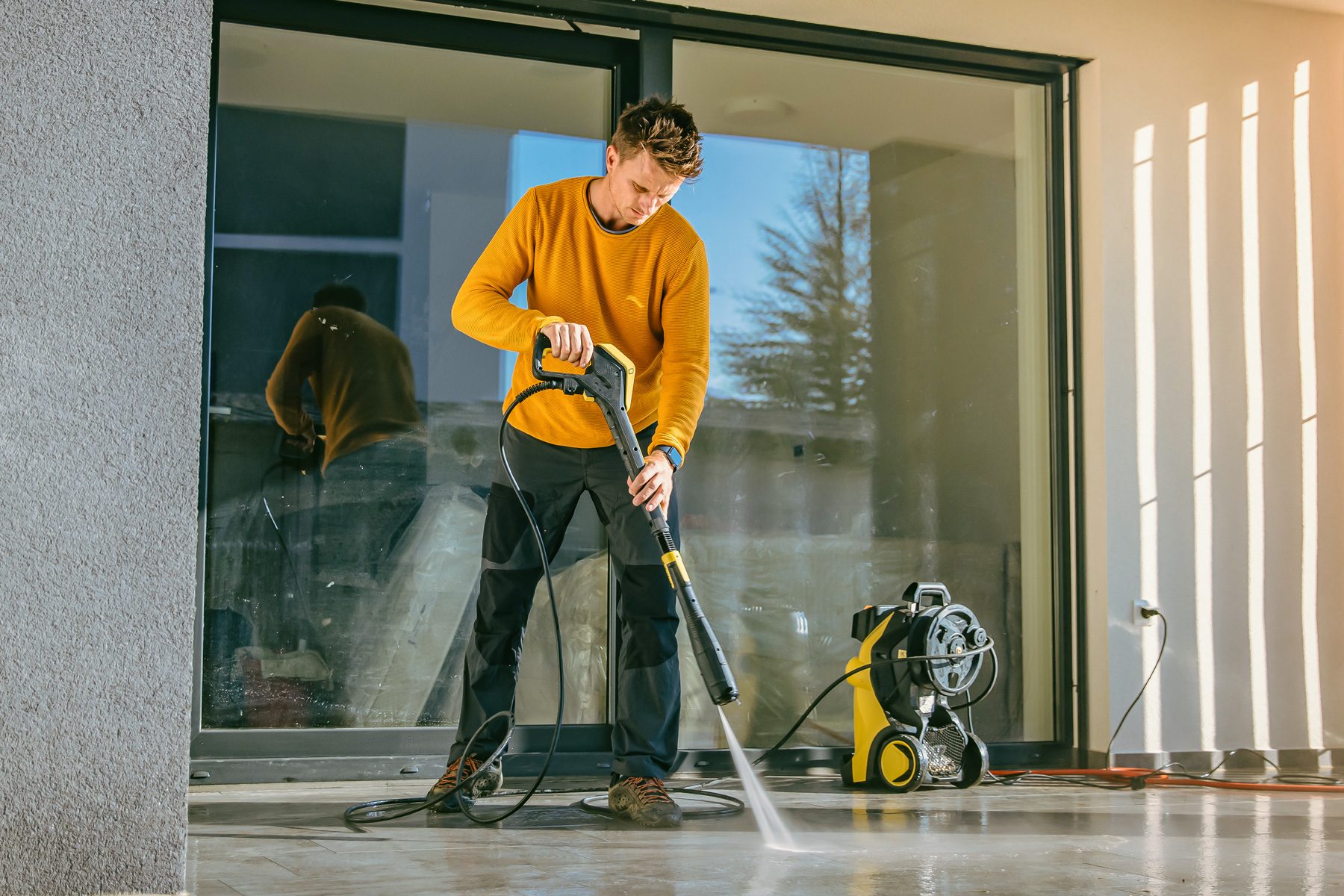Learn the best tips for using and maintaining a pressure washer.
13 Helpful Pressure Washer Tips
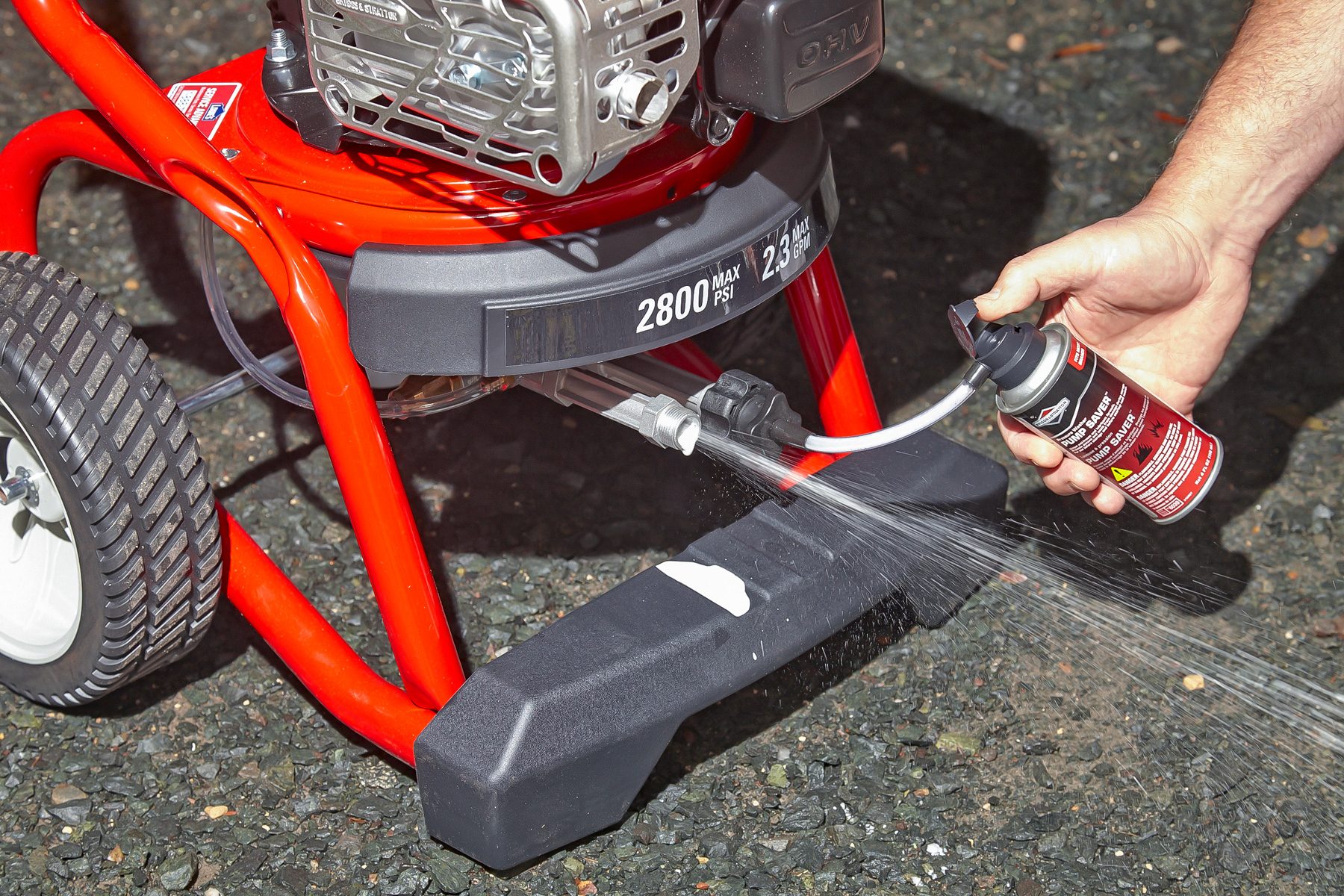
Use a Pump Protector Product
Leaving water in the pump can result in mineral buildup and corrosion, which wear out the pump seals and pistons. To avoid costly repairs, flush the pump after every use.
Pick up a can of pump lube/antifreeze solution. Screw a garden hose adapter onto the pump inlet and press the trigger until you see foamy liquid shoot out the other port. That means the pump is fully lubed and protected against damage.
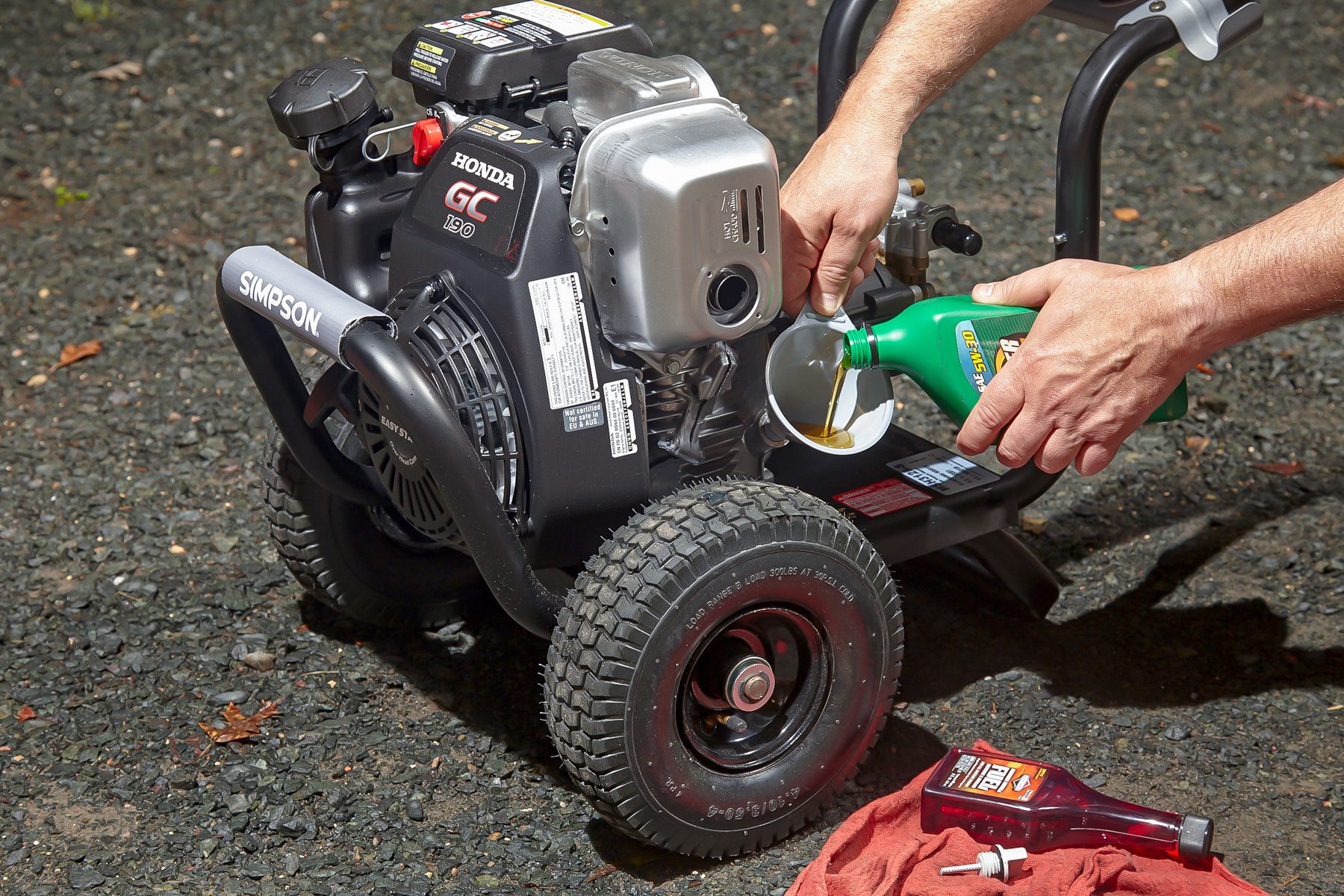
Change Oil Frequently
The small engines on residential pressure washers have a limited life span (sometimes less than 200 hours). But you can extend the life of the engine by changing the oil often.
Even if you have only a few hours’ use, drain the oil and refill with fresh oil (follow the manufacturer’s recommendation for viscosity and type). “I maintain my machines several times throughout the season,” Pancione says.
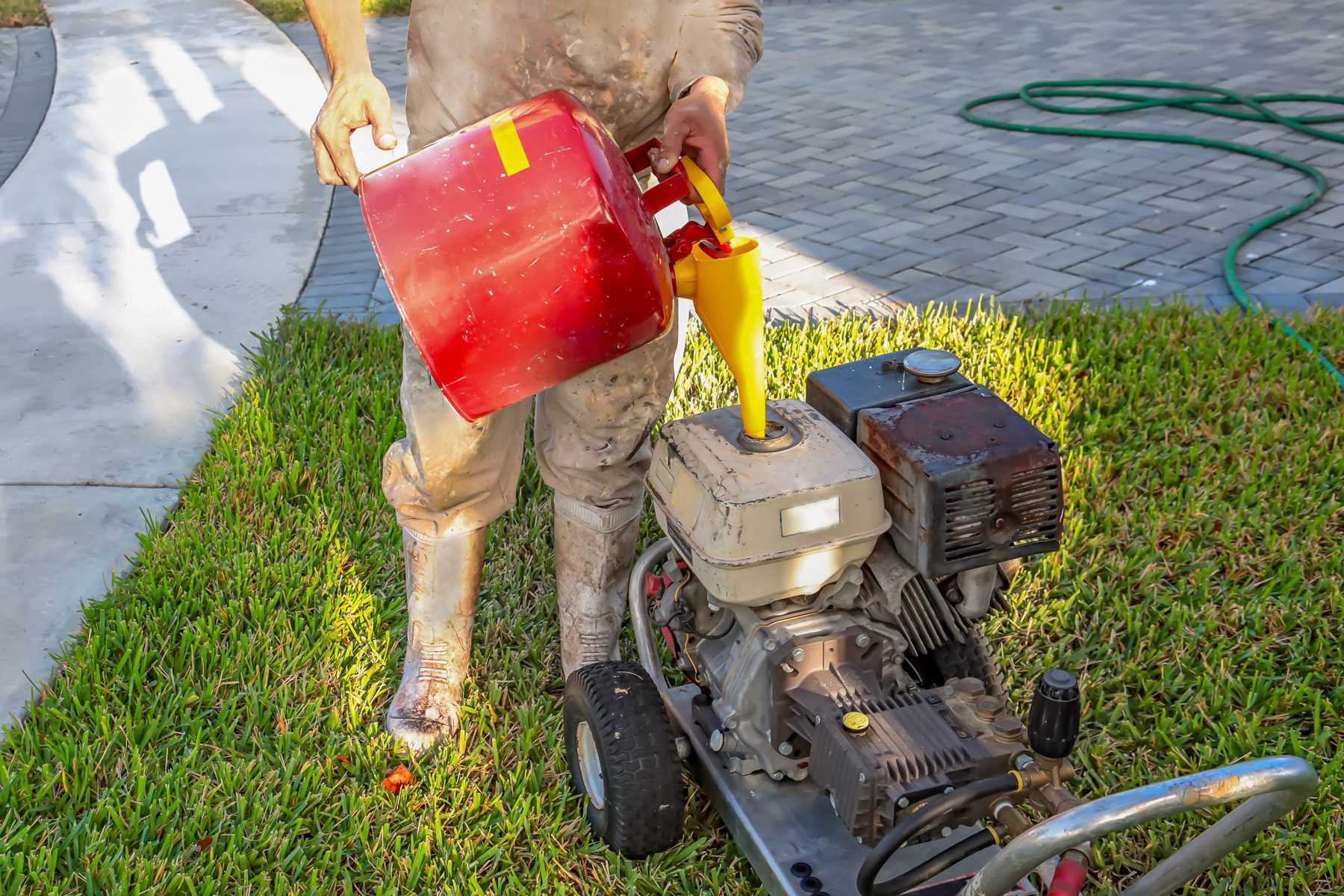
Always Use Treated or Premium Gas
Small engines run best on low-ethanol or ethanol-free gas. These types of gas cost more, but they also prevent clogged carburetors and fuel filters and can prolong spark plug life.
If you use low-ethanol gas, make sure to add a fuel stabilizer to prevent water absorption. If it’s available, and you can afford it, opt for premium, ethanol-free gasoline. This is not available at all gas stations, but check pure-gas.org for your nearest supplier.
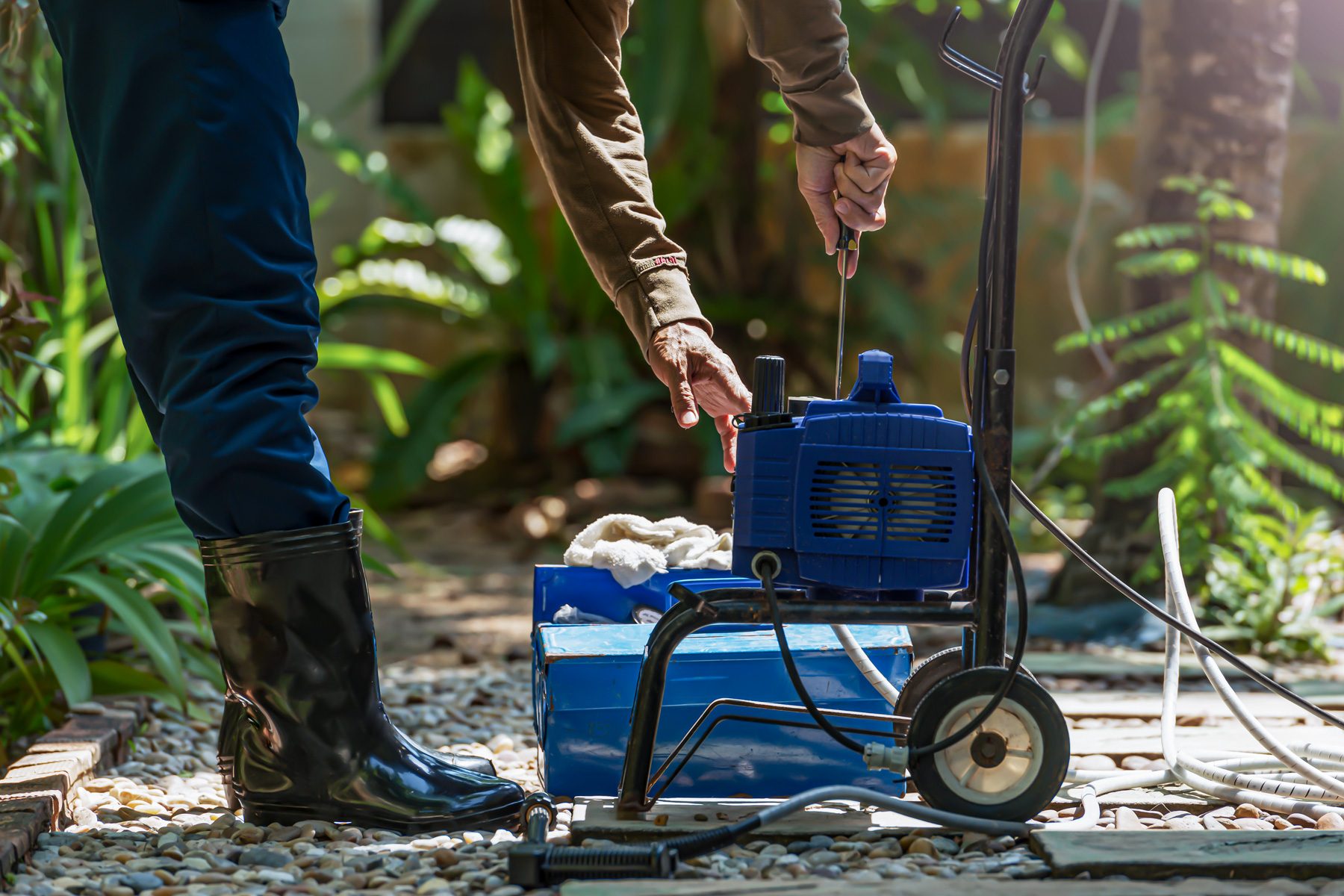
Properly Prepare for Storage
An important part of pressure washer maintenance is getting the machine ready to be stored. You can’t just stick a pressure washer in your shed and forget about it for the winter.
“Before the end of the season, I like to rinse out all the guns and hoses, change out the fluids, empty the fuel and add pump protector to ensure the machines are ready to run as soon as spring hits,” Pancione says.
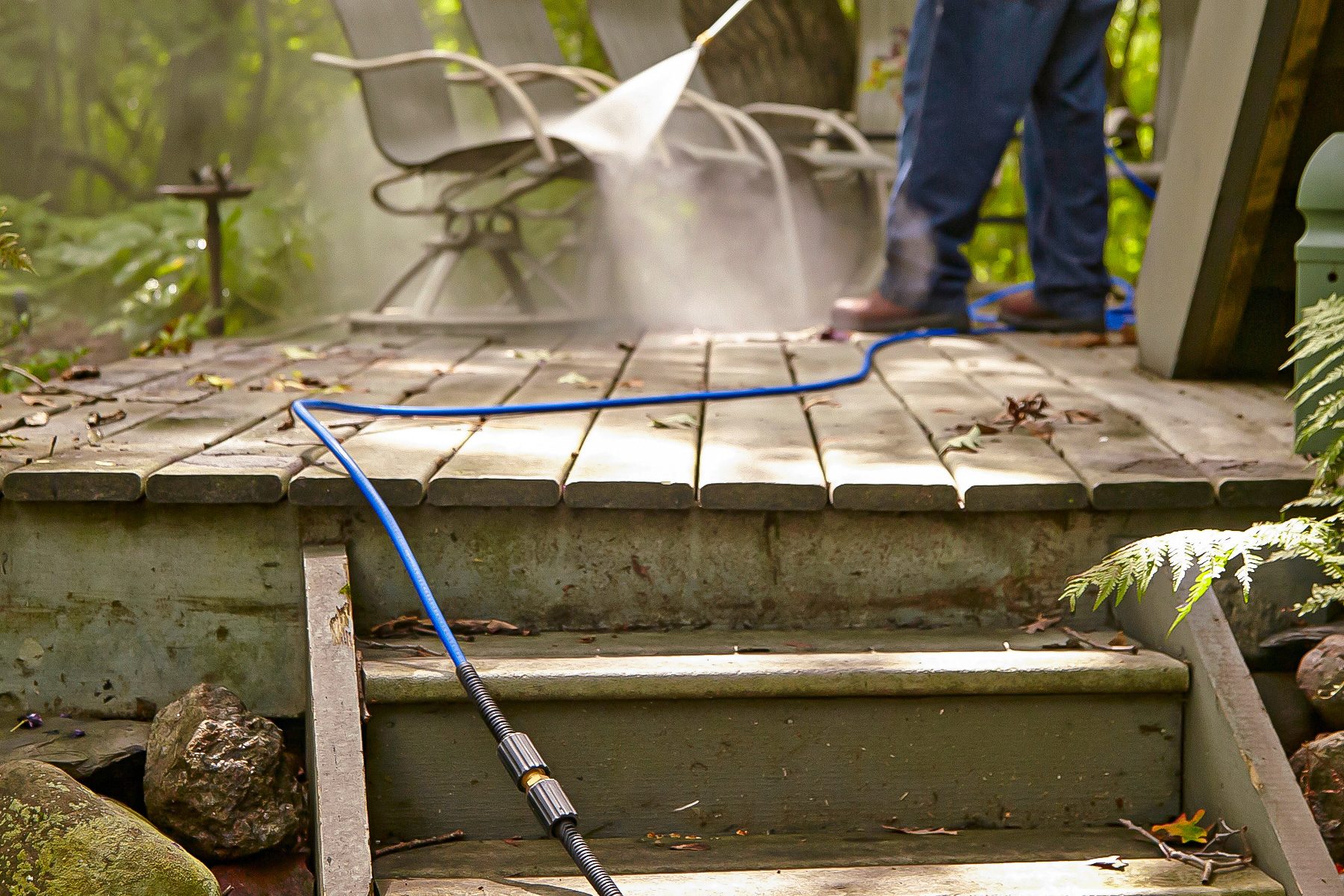
Add a Hose Extension
Most residential pressure washers come with a 25 ft. hose. That means you have to lug the machine upstairs to wash your deck or constantly shut down the engine, so you can move it as you work. Solve this problem with a 50-ft. extension hose and leave the pressure washer in one spot. The extra hose will cause a slight pressure and volume drop, but you’ll still have enough power to clean most surfaces.
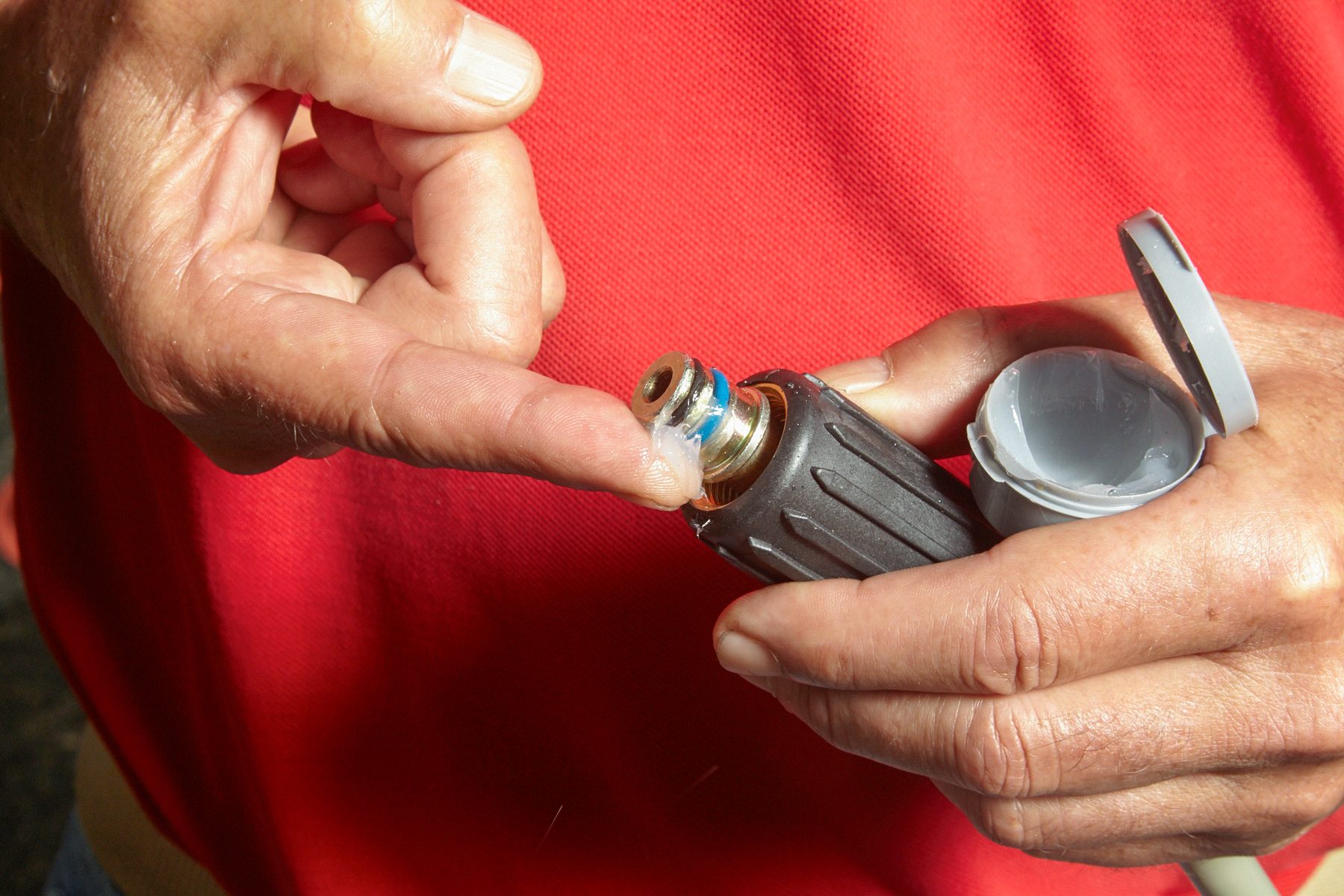
Lube Pressure Washer Hose Connectors
Dry O-rings in a pressure washer hose connector can twist slightly and tear as you make the connection, causing them to fail. Keep them lubed with silicone plumber’s grease after every five uses.
The connections themselves can become coated in chemical residue. Pancione recommends cleaning and lubing these parts as well. “The chemicals that get pumped through can leave a residue that, in turn, can make them seize up,” he says.
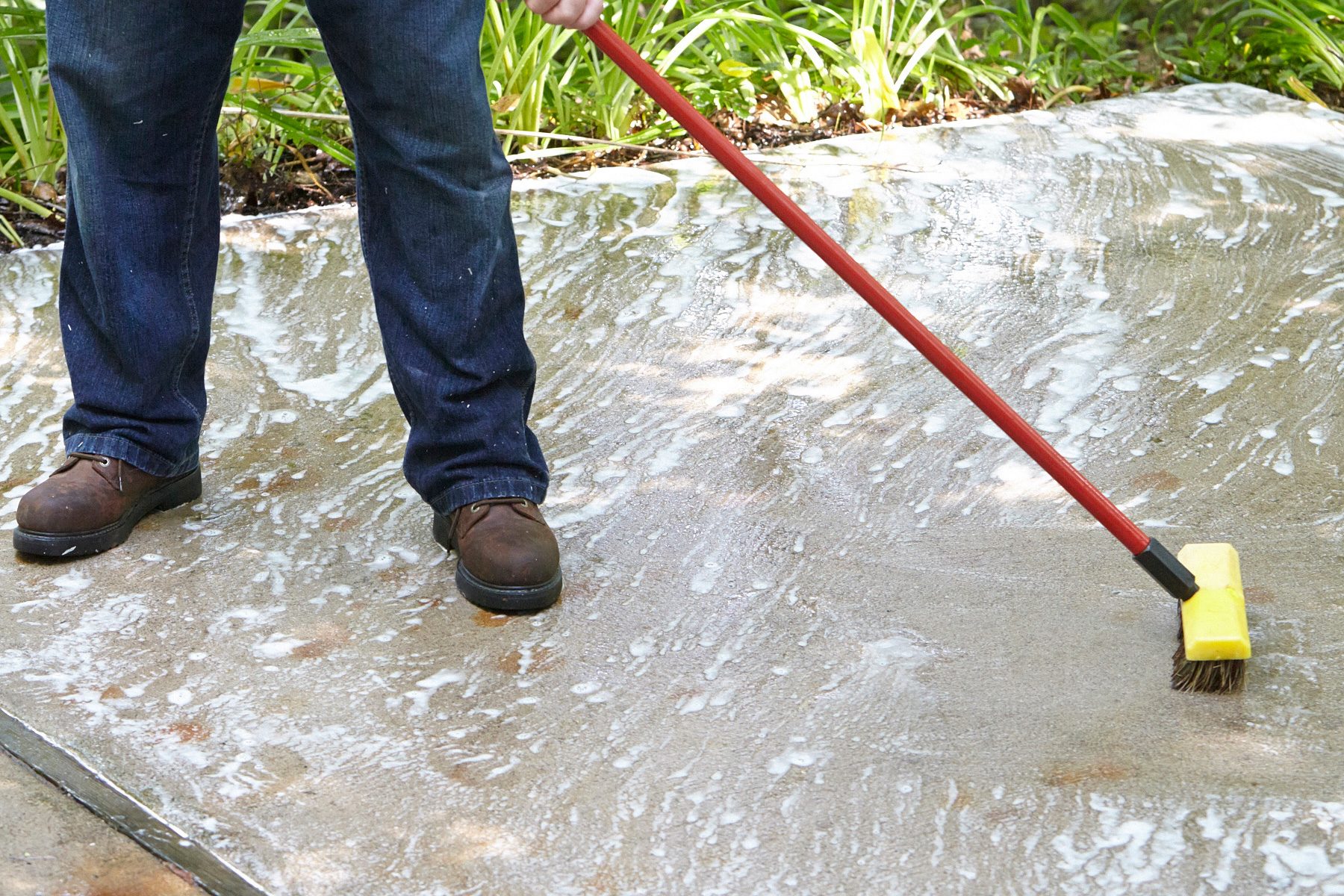
Use Only Cleaning Fluids Designed for Pressure Washers
Use dedicated pressure washer fluids only, or risk destroying the pump. Even if the soap is rated for pressure washer use, ensure it’s the right soap for the job. Vehicle wash soap, for example, won’t clean concrete, and the chemicals in concrete soap can discolor bright metal car parts.
For the best results, let the soap set for the recommended time and scrub heavily soiled surfaces with a brush before you rinse.
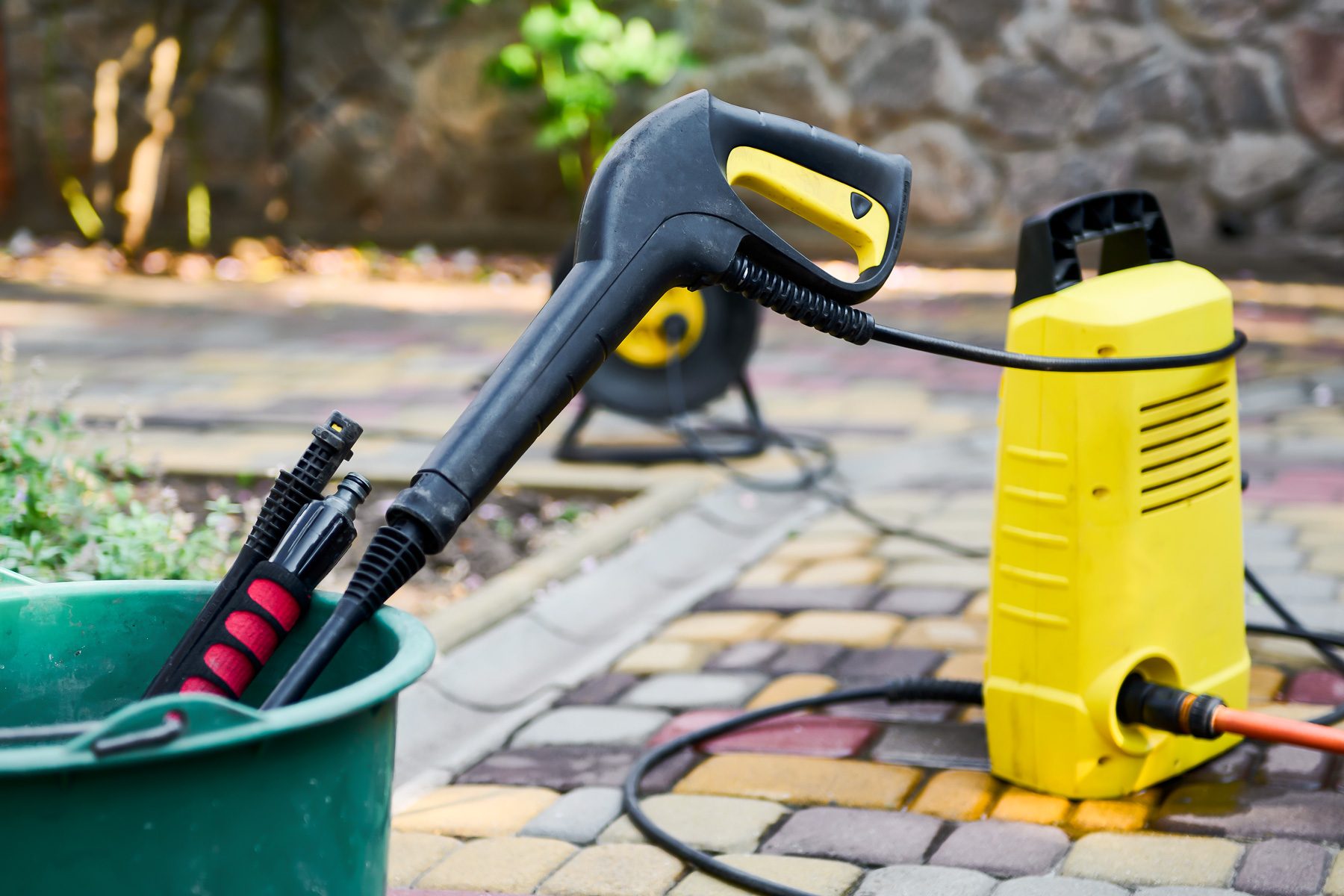
Empty the Soap Dispenser After Each Use
Never leave soap in the dispenser when you store the machine—it can dry into crystals and cause pump damage. Flush it after each use and pull the gun trigger to run clear water through the pump before you shut it down. Make this a regular part of your pressure washer maintenance routine.
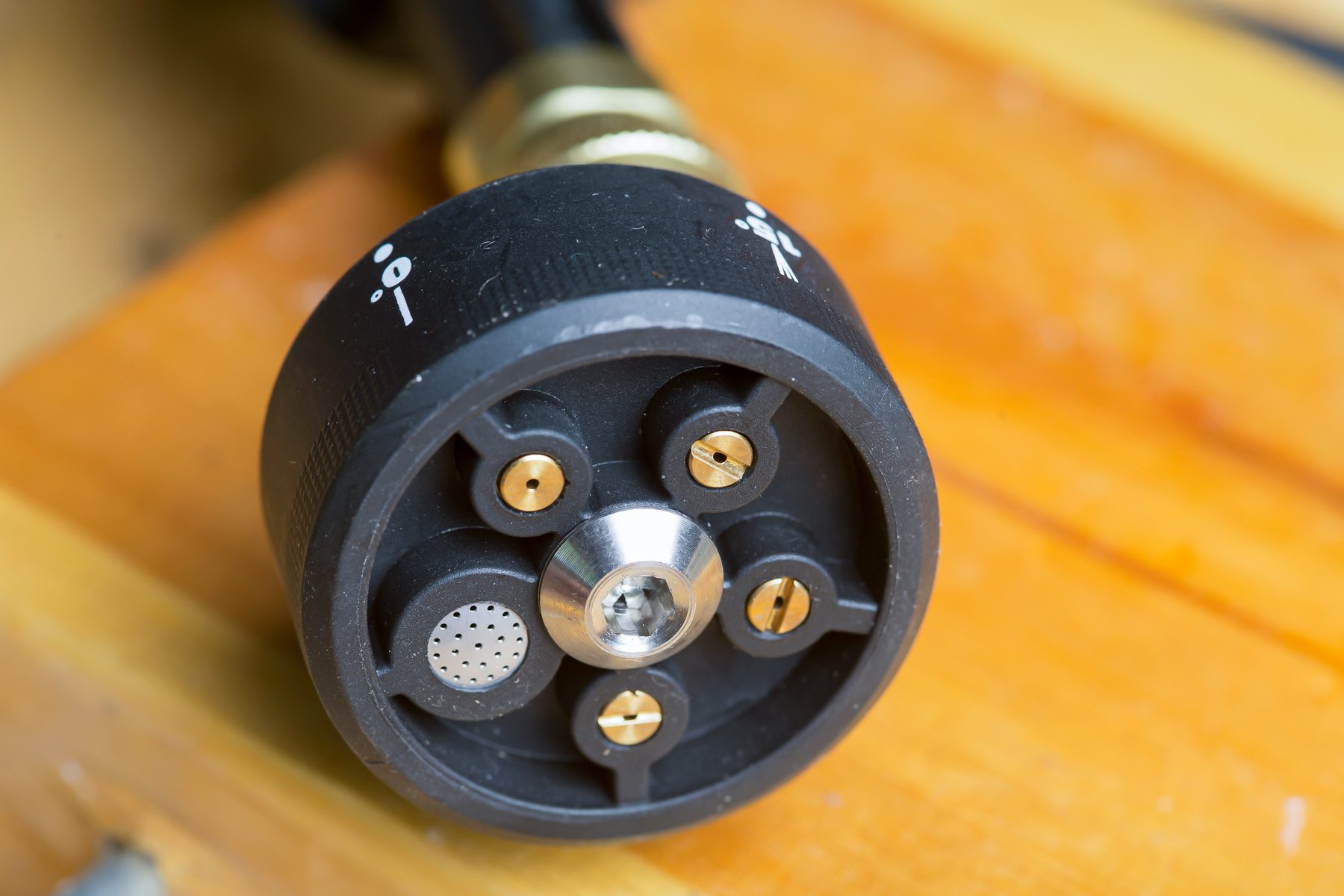
Use the Right Pressure Washer Nozzle for the Job
“Using the right nozzle or tip will make the washing project much more effective,” Pancione says. “The tip should create just enough pressure and pattern to wash the substrate without causing damage or removing too much.”
Pressure washer nozzle tips are color-coded to denote their spray pattern. The highest-pressure tip is red, followed by yellow, green and white. Black tips are used to dispense soap.
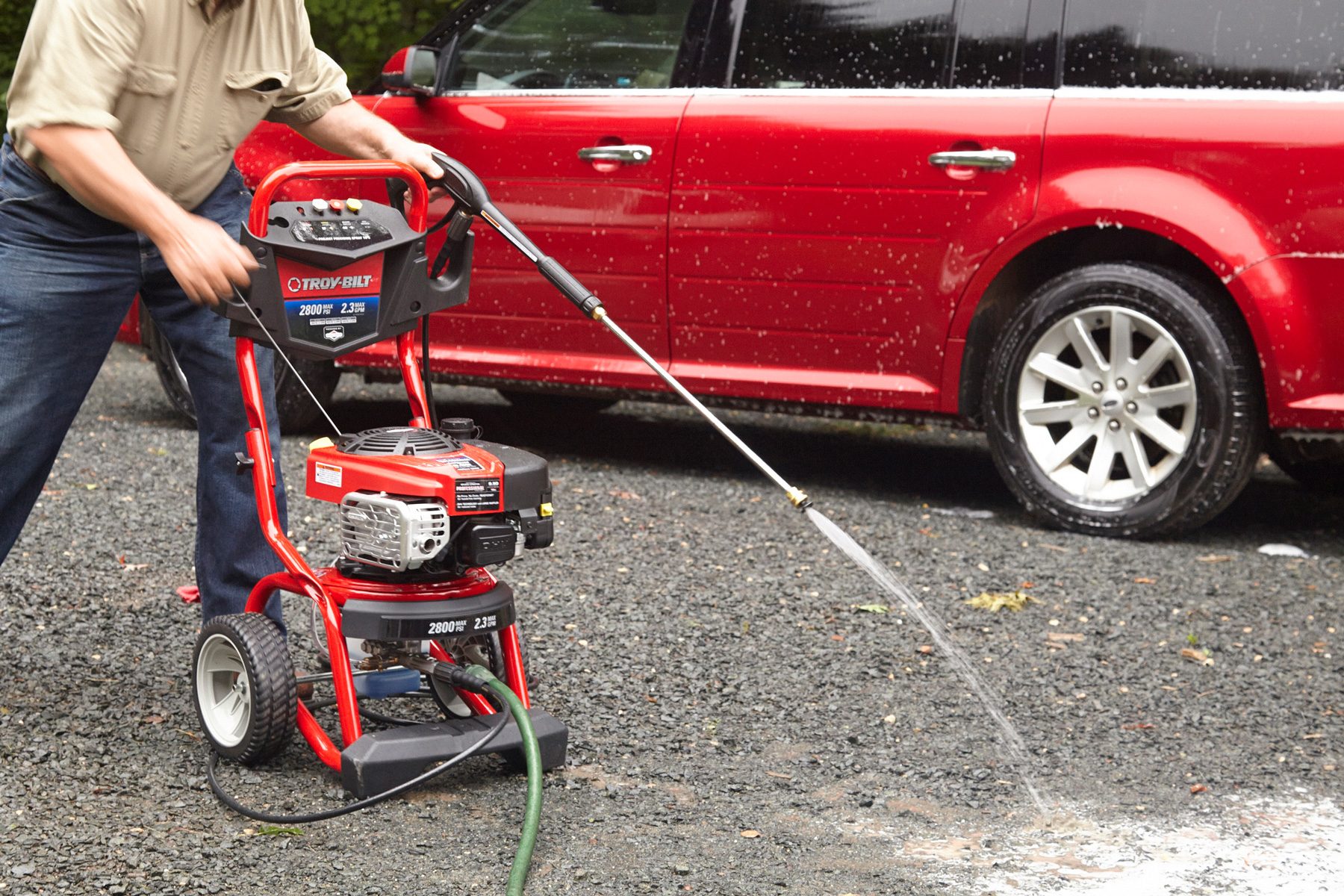
Pull the Pressure Washer Trigger First
Pressure washers that utilize a pull start can be challenging to start. Before you yank the starter rope, pull the gun trigger (or have someone else do it). This will relieve pump pressure and lower engine resistance, making it easier to start. This works for gasoline pressure washers only.
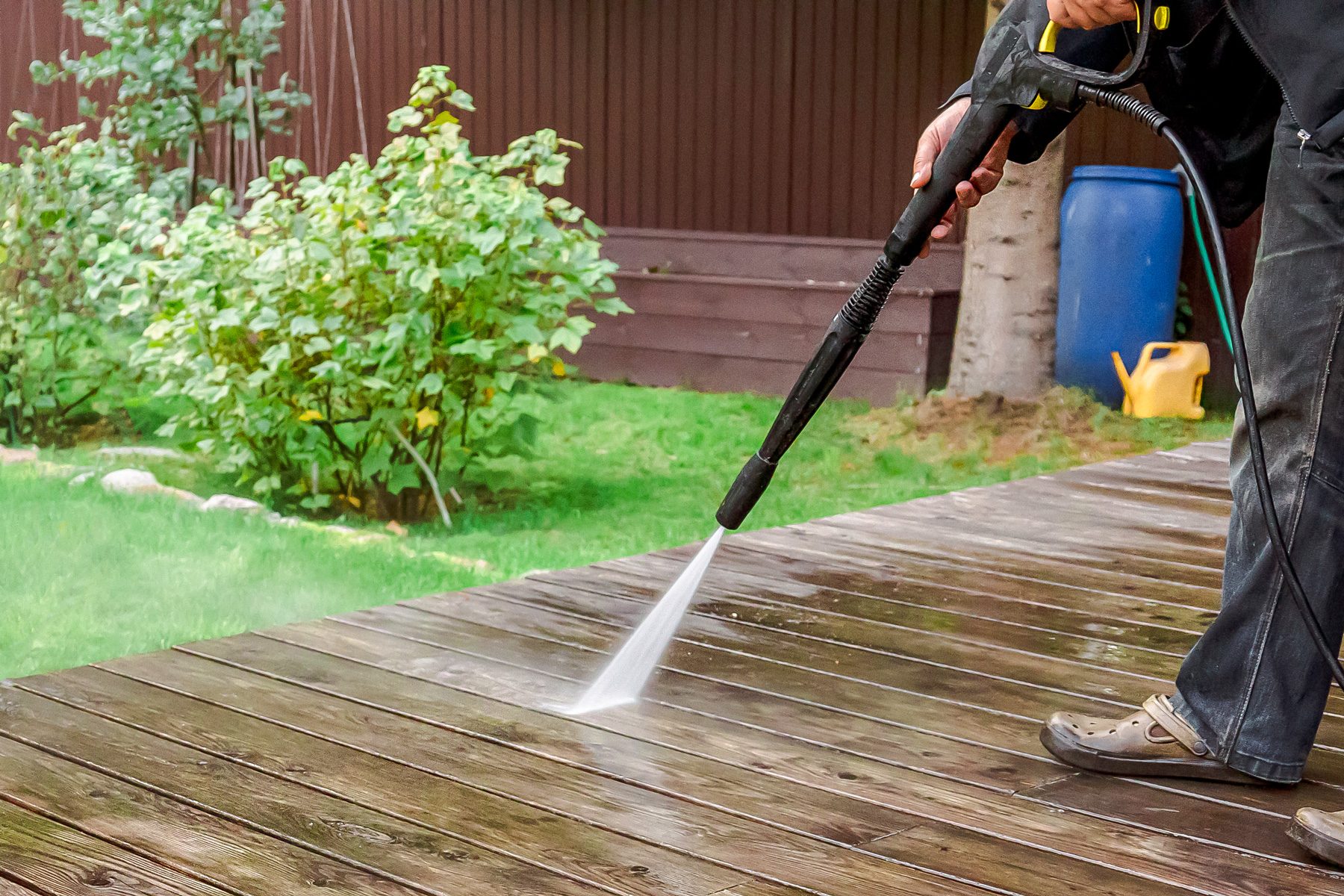
Use a Specific Spraying Technique
Ghent says to point the wand away from any surfaces, then pull the trigger to begin the stream. Work in a wide, sweeping motion and add a flick at the end of each pass. This pulls the pressured water stream away from the surface and prevents gouges or uneven cleaning. “This is the best method, but it takes a little practice at first,” Ghent says.
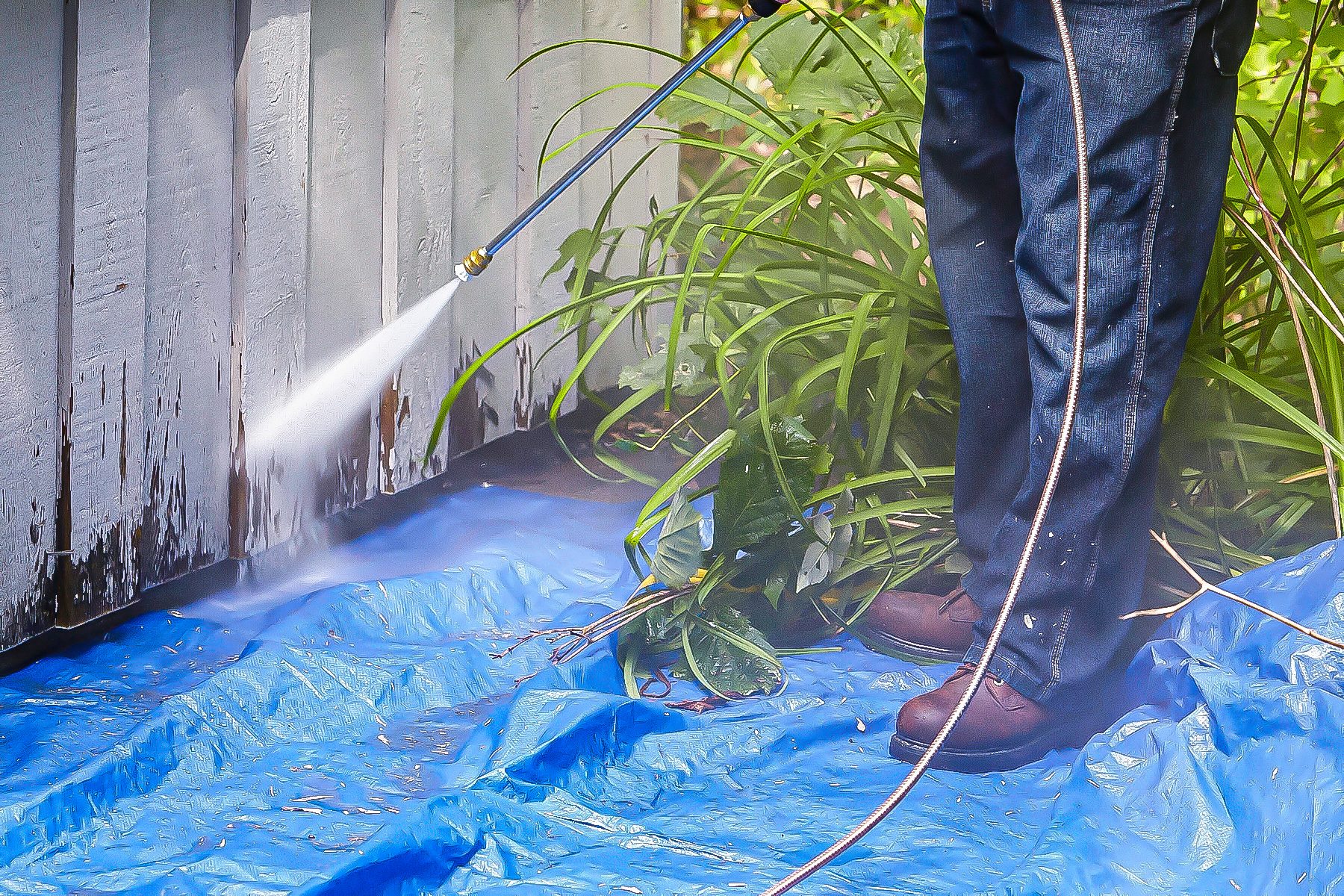
Protect the Area Before You Pressure Wash
If spraying a cleaning agent or chemical through a pressure washer, Pancione recommends first rinsing plants and any surfaces not being washed. If removing peeling paint, cover plants, landscaping and other items with netting. The water drains away, and the paint chips are caught in the netting for easy cleanup. “This is such a simple, inexpensive solution to a problem we’ve encountered for years,” Pancione says.
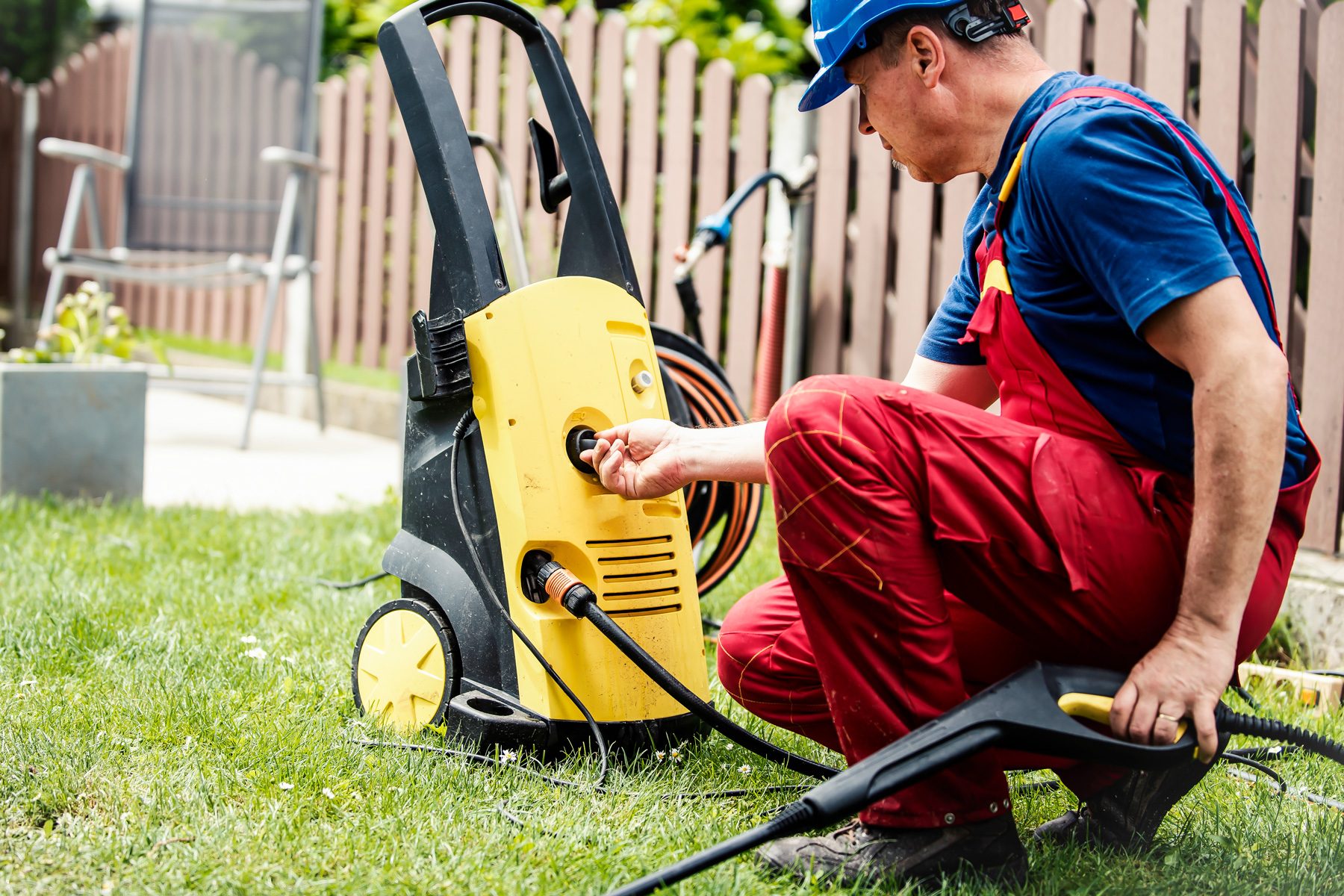
Adjust the Pressure Setting for Different Materials
Turn the pressure up or down, depending on the project. For pressure washing a pressure-treated wood deck, use 1,000 to 1,200 psi. With softer woods, Ghent says to dial it back to about 500 to 600 psi. “This will work well for your cedar or pine decks,” he says. Removing stains from concrete will require up to 2,500 psi, while wood siding does best with 500 to 800 psi.
About the Experts
- Ryan Ghent is the owner of Element Pressure Washing, a residential pressure washing company in South Deerfield, Massachusetts. He has four years of industry experience.
- Shayne Pancione is the owner of Pancione Painting Plus, a full-service residential and commercial painting company in Easthampton, Massachusetts. He has over 25 years of experience in the trade.




















